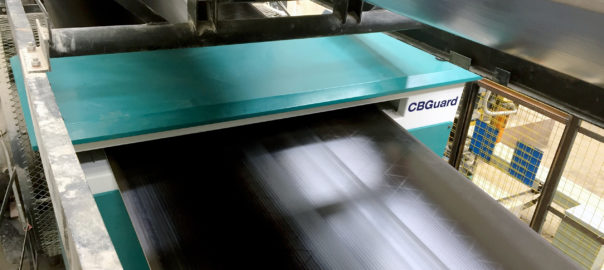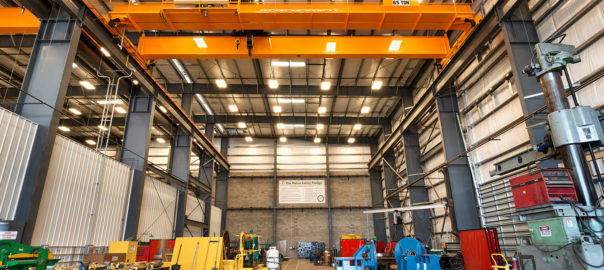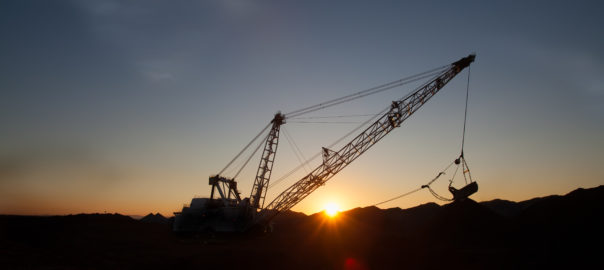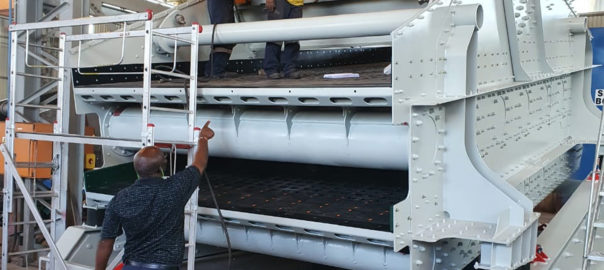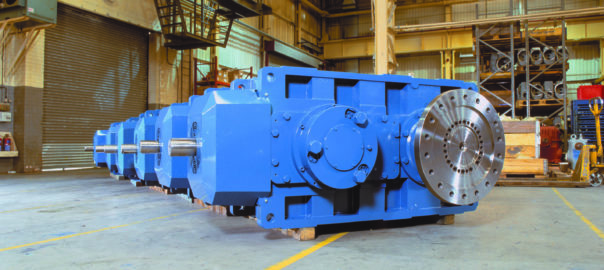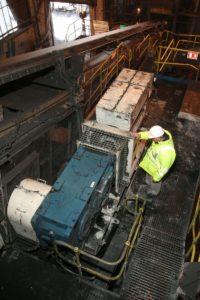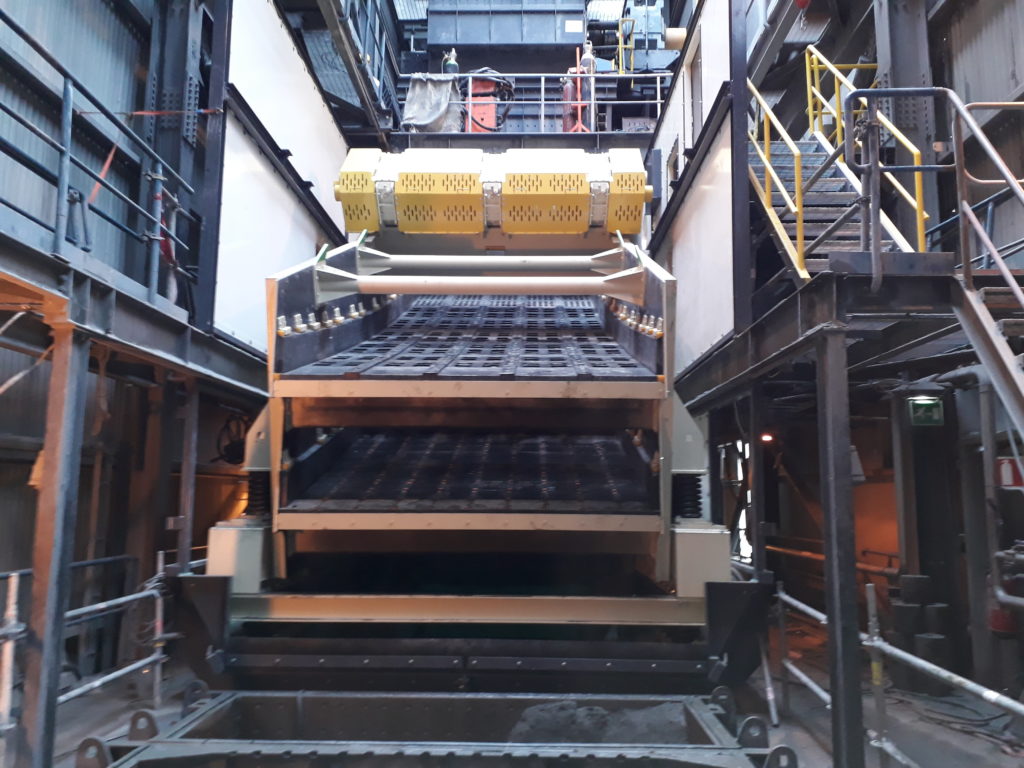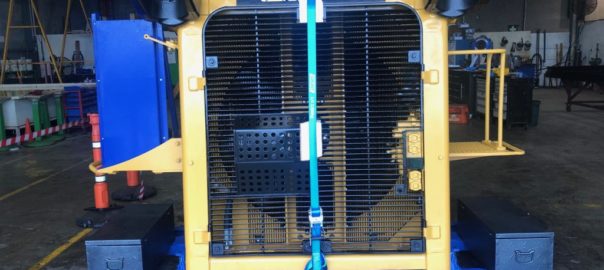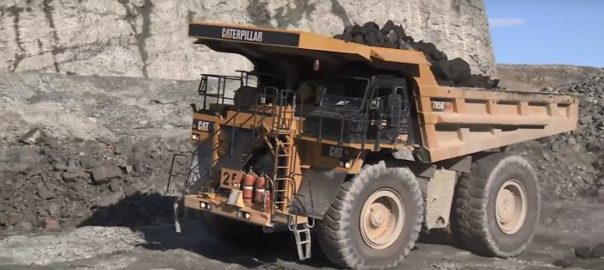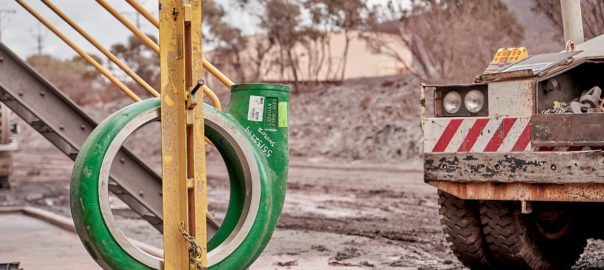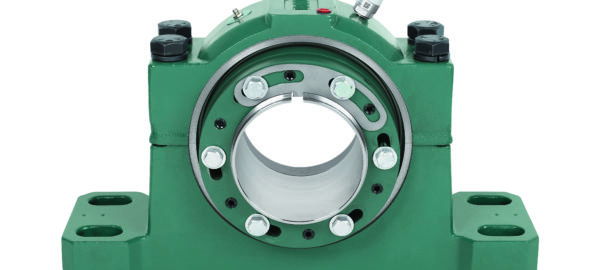As the digitalisation of processes in mines progresses, machines linked into the Industrial Internet of Things (IIoT) gain in importance, according to Bernd Küsel of CBG Conveyor Belt Gateway.
An important part of predictive maintenance and accident prevention is the continuous examination and diagnosis of steel cord conveyor belts, which are mainly used in the long-distance conveying of ores, coal and other raw materials. These conveyor belts are essential to many mining and loading facilities.
Many operators still rely on inspection personnel from service companies equipped with portable devices to inspect conveyors, but their appointment can be problematic. And, with today’s travel restrictions, this is close to impossible.
The problem comes as such inspections provide an insufficient picture of the condition of a conveyor belt that is reliant on interpretation by trained persons, with portable devices that only cover parts of a conveyor belt, according to Küsel. Moreover, inspections only offer a snapshot in time without the possibility to intervene in the case of threatening belt defects that could lead to a total failure of the conveyor system.
In times of crisis, such as the current COVID-19 pandemic, it is even more important to use a self-sufficient, automatic diagnostic system, according to Küsel.
“The virtually maintenance-free CBGuard scanner provides complete knowledge of the condition of the conveyor belt in real time,” he says. “It is operated from the user’s control centre or via the Internet.”
Damage can be repaired at the best possible time for the customer, reducing unnecessary downtime and the associated costs and loss of production that come with this.
The CBGuard scanner can be an indispensable part of a predictive maintenance program, Küsel says.
“With it, conveyor belts can be integrated into the IIoT, ie into seamless communication with other electronically monitored systems. CBGuard provides a complete, detailed knowledge of the condition of the conveyor belt – non-stop and online,” Küsel said. “Virtually every cubic millimetre of the conveyor belt is checked during operation. The CBGuard scanner compares the detected values with the target values in real time. Every critical change triggers a reaction. The operating personnel are immediately informed of serious errors via SMS. In addition, the exact thickness of the entire conveyor belt can be measured and outputted as a contour map.”
The CBGuard Life Extender, meanwhile, detects internal damage such as steel cord breakage, corrosion, misplacements and other defects of the tension member. The exact condition of each steel cord can be viewed on a monitor in real time. The same applies to certain belt breakers and conductor loops.
Damage such as holes, foreign bodies, protruding ropes, edge breakage, bubbles, rubber cover abrasion and even insufficient belt cleaning are detected. Each defect automatically generates a predetermined, individual reaction. Information about the findings is additionally available at any time as a photo, video or inspection report, which tells personnel exactly what kind of damage it is, how severe it is and the location of said damage.
The CBGuard scanner also prevents fatal consequences caused by splice defects, Küsel said. As the weakest links in a conveyor belt, splices pose a greater risk to the operation – with potentially devastating consequences.
The CBGuard Life Extender scans all splices. Every single splice is individually assigned in the database and compared with its target state. Any critical deviation generates an alarm or a stop of the system in case of threatening defects.
“No other method available on the market can provide such exact and comprehensive results,” Küsel said.
The way CBGuard works is similar to that of X-ray machines in the healthcare sector or in airports.
The device consists of an X-ray generator with a tube, a receiver module and a control unit. The generator produces artificial X-rays from electricity, with the ionising rays penetrating the moving conveyor belt and then hitting the receiver module – an amorphous silicon imaging field.
It is a process like that of photo diodes in a digital camera. Countless, seamless images are continuously generated and defined by CBGuard’s smart software – based on advanced face and palmprint recognition algorithms – checking the condition of the belt, while accounting for the individual structure, size, colour and position of deviations and reporting them as a specific event (eg damage).
“Using a CBGuard is safe,” Küsel said. “The device complies with all international regulations on radiation emission. It does not contain radioactive material!”
The compact design and low weight of the CBGuard makes for a quick and easy installation on almost any belt conveyor. The scanner is also almost wear-free, according to Küsel, as it has no moving parts or contact with the conveyor belt.
All functions of the CBGuard Life Extender can be remotely controlled via TCP/IP, with maintenance or programming work possible from anywhere in the world. The analysis software runs under Windows 7 and 10, and the program is intuitive and easy to use, he said.
CBGuard has proven its performance in over 300 applications, according to Küsel, noting that large copper mines in Peru and Chile rely on CBGuard. There are many other applications in Australia and Asia in the limestone and coal sectors, he added.
The CBGuard scanner ensures fully automatic, complete monitoring of steel cord conveyor belts making inspections by personnel or devices that only cover a part of the conveyor belt spectrum unnecessary, Küsel says.
The gain in safety, the independence from personnel availability and the reduction of capital expenditure and operating expenditure are convincing arguments for the use of a CBGuard, he explained.
On the operation expenditure side, for example, there is no longer a need to employ internal maintenance personnel or outsource external services to inspect the belt. Such inspections, typically carried out weekly, are conducted in belt ‘creep mode’ and involve a full shut down, according to Küsel.
“With the CBGuard, you do not have any production downtime because it is carrying out the inspections all the time at the normally operating conveyor, at its normal speed,” he said.
Belt repairs also only occur when necessary, with details of failures coming from the CBGuard. “You will see serious damage immediately, so you can repair them before they get worse and cost much more money to fix,” he said.
This also provides capital expenditure benefits, with the CBGuard telling operators when and which part of the belt is worn out. In many cases, only part lengths will have to be changed, not the entire belt length.
This comes with inventory benefits too, with companies no longer having to carry extensive stock belting as the CBGuard is able to predict in good time when the belt will need to be replaced.







